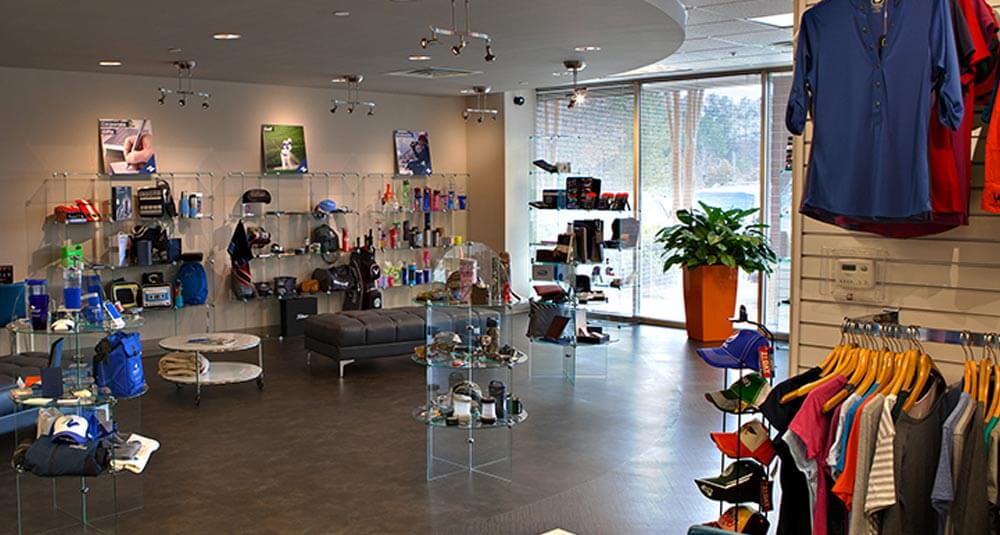The Power of Visual Merchandising: Tips and Tricks for Retail Displays

In today’s highly competitive retail environment, standing out from the crowd is more important than ever. Visual merchandising plays a crucial role in attracting customers and encouraging them to spend more time in your store. In this detailed blog post, we’ll explore the power of visual merchandising and share expert tips and tricks to help you create retail displays that not only catch the eye but also drive sales and enhance the customer experience.
The Importance of Visual Merchandising
First impressions are everything in retail, and visual merchandising is key to making a positive and lasting impact on potential customers. By strategically designing and organizing your store’s layout and displays, you can:
- Create a Welcoming Atmosphere A visually appealing store entices customers to step inside and explore, increasing foot traffic and the likelihood of making a sale.
- Enhance the Shopping Experience Well-planned visual merchandising makes it easy for customers to navigate your store and find what they’re looking for, leading to a more enjoyable and efficient shopping experience.
- Establish a Strong Brand Identity Consistent visual merchandising reinforces your brand’s identity and sets you apart from the competition, making it more likely that customers will remember your store and return in the future.
- Drive Sales Eye-catching displays can effectively showcase your products, piquing customers’ interest and increasing the chances of impulse purchases.
Store Layout and Design
Creating an optimal store layout is essential for visual merchandising success. Consider the following tips to help customers effortlessly navigate your store:
- Store Flow and Navigation Ensure that aisles and pathways are wide enough for customers to move comfortably, and use signage to guide them through different sections of the store.
- Product Grouping and Focal Points Group related products together and use focal points, such as endcaps and island displays, to draw attention to featured items or promotions.
- Lighting and Atmosphere Utilize a mix of ambient, task, and accent lighting to create a welcoming atmosphere and highlight specific products or areas within your store.
- Window Displays Craft enticing window displays that showcase your merchandise and reflect your brand’s identity, luring customers in from the street.
Effective Product Displays
- The way you display your products has a significant impact on sales. Keep these tips in mind when designing your product displays:
- Vertical vs. Horizontal Merchandising Balance vertical and horizontal merchandising to create visual interest, making sure to place high-demand products at eye level for easy accessibility.
- Cross-Merchandising Place complementary products near each other to encourage customers to make additional purchases, such as pairing accessories with clothing items.
- Color Psychology Use color psychology to your advantage by incorporating colors that evoke specific emotions or reactions, like using red for sale signs to create a sense of urgency.
- Storytelling and Themes Create themed displays that tell a story, making it easier for customers to imagine how your products fit into their lives.
Engaging Customers Through Senses
Multisensory experiences can significantly enhance the shopping experience. Consider these tips to engage customers on multiple levels:
- Visual Elements Use a variety of textures, patterns, and colors to create visually interesting displays that capture customers’ attention.
- Tactile Experience Encourage customers to touch and interact with products by creating hands-on displays and offering product samples.
- Aromas and Scents Incorporate subtle, pleasant scents that complement your merchandise and create a memorable atmosphere. For example, a home goods store might use a light vanilla scent to evoke feelings of warmth and comfort.
- Sounds and Music Carefully select background music that matches your brand identity and target audience, while also setting the right tempo to encourage browsing and spending.
Maintaining and Updating Displays
Keeping your displays fresh and up-to-date is essential for maintaining customer interest and maximizing sales. Consider these strategies for ongoing visual merchandising success:
- Regular Assessment Periodically evaluate your store’s layout, lighting, and displays to ensure they remain visually appealing and effectively showcase your products.
- Seasonal and Promotional Updates Update your displays regularly to reflect seasonal trends, holidays, and promotions, ensuring your store stays relevant and engaging.
- Leveraging Data and Analytics Track customer behavior, sales data, and feedback to identify which displays and merchandising strategies are most effective, then use this information to refine your approach and optimize results.
Conclusion
Visual merchandising is a powerful tool for capturing customers’ attention, enhancing the shopping experience, and driving sales. By implementing these expert tips and tricks for retail displays, you can create a visually stunning and engaging environment that not only sets your store apart from the competition but also keeps customers coming back for more. Remember, the key to successful visual merchandising lies in continually refining your approach and staying up-to-date with industry trends and customer preferences.






Responses